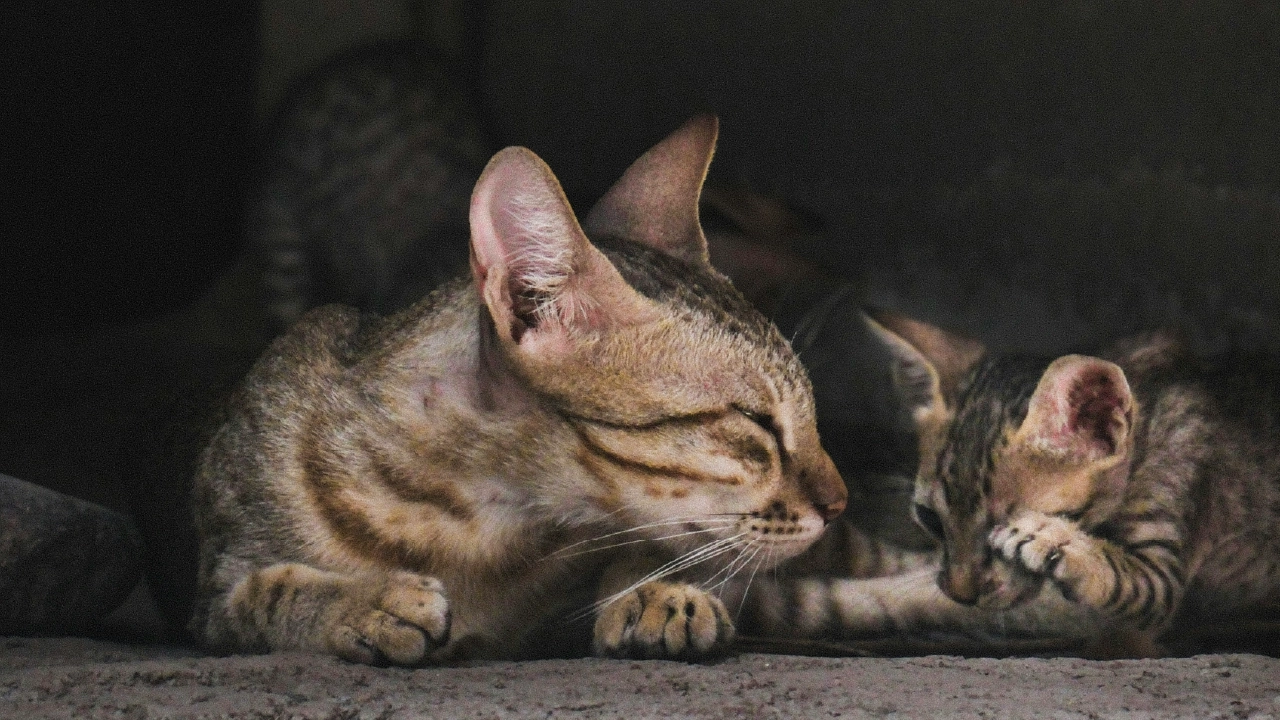Bringing a kitten home is such a comforting experience—those little paws, the lively energy, and, of course, the endless cuddles. But let’s be honest, it’s also a whirlwind of preparations—setting up their cozy little bed, regular vet visits, and ensuring you’ve got everything they need. But, what if you already have a cat at home? Well, that adds an entirely new challenge. I would like to say “Unknown Challenge”.
As a cat parent, you naturally want your furry companions to get along. But cats are territorial by nature. So, a sudden newcomer can throw them off balance, leading to stress, anxiety, and even health issues. That’s why a slow and thoughtful introduction is very important.
With a little patience and the right approach, you can help your resident cat and new kitten build a peaceful, lasting bond.
Why Does a Slow Introduction Matters While Introducing a Kitten to a Cat?
Introducing a kitten to an adult cat isn’t just about avoiding fights—it’s about ensuring both cats feel secure, mentally relaxed and comfortable. A stressful introduction of a kitten to a cat can lead to long-term behavioral issues, including:
- Aggression – Cats that feel terrorized may lash out.
- Anxiety – A fearful cat may hide, avoid interaction, or stop eating.
- Health problems – Stress can lead to serious health issues in Cats, like digestive issues, weakened immunity, etc.
- Territorial disputes – If not appropriately introduced, your resident cat may see the kitten as an intruder.
A well-planned introduction helps your older cat to adjust with the newcomer while allowing the kitten to grow into a confident and well-adjusted adult.
Steps to Introduce a Kitten to an Adult Cat
Follow these steps for a smooth introduction, if you’re welcoming a new kitten into a home with a resident cat.
Step 1: Always Make a Different Safe Space for the Kitten
For the first few weeks, your kitten should have a separate space to settle in. Choose a quiet room and set it up with essentials:
- Food and Water Bowls – Keep them fresh and separate from the litter box.
- Comfortable Bedding – A soft, cozy spot where your kitten can rest.
- Litter Box – Make sure it’s easily accessible.
- Toys and a Scratching Post – This keeps your kitten entertained and helps them feel at home.
- Hiding Spots – Cats love small, enclosed spaces where they feel safe.
This setup allows the kitten to get used to their new environment without feeling overwhelmed. It also helps your resident cat adjust to the idea of a new feline in the house without direct contact.
Step 2: Do Scent Swapping
Once your kitten has settled in, swap scents between the two cats. This helps them get familiar with each other before meeting face-to-face.
- Exchange bedding or toys between the kitten and the resident cat.
- Let them sniff under the door where the other cat is.
- Observe their reactions – If they hiss or growl, give them more time before moving to the next step.
Step 3: Room Swapping
After a few days of scent swapping, allow each cat to explore the other’s territory—but separately. Let your resident cat enter the kitten’s space and vice versa. This helps them get used to each other’s scent in a non-threatening way.
Start with 10–15-minute sessions, then gradually increase the duration. If both cats seem calm, you’re ready for the next step.
Step 4: Controlled Visual Contact
Now it’s time for your cats to see each other. Use a baby gate, a glass door, or keep the kitten in a carrier while the older cat observes.
- Watch their body language.
- Signs of calmness: Relaxed posture, ears forward, slow blinking.
- Signs of stress: Hissing, growling, puffed-up fur, tail swishing.
- Reward calm behavior with treats and praise.
- Keep sessions short (5–10 minutes) and gradually extend them as they get more comfortable.
Step 5: Supervised Face-to-Face Meetings
Once both cats seem relaxed when seeing each other, allow them to interact without barriers. Keep the initial meetings short and supervised.
- Engage them with play – Use interactive toys like feather wands to create positive associations.
- Avoid forcing interactions – Let them approach each other at their own pace.
- If hissing or swatting occurs, separate them and try again later.
Repeat these supervised meetings daily, gradually increasing the time they spend together.
Step 6: Gradual Unsupervised Time
Once the cats consistently tolerate each other without aggression, allow them to spend more time together without supervision. Start with short durations, like when you step out for errands. If needed, use a pet camera to monitor their behavior.
Key tips:
- Provide multiple litter boxes, food bowls, and resting spots to avoid competition.
- Ensure plenty of vertical space (cat trees, shelves) so they have places to retreat.
- Keep using calming aids like pheromone diffusers if needed.
What are the Signs of a Successful Introduction?
You’ll know the introduction was successful when:
- The cats tolerate each other’s presence without signs of stress.
- They eat and play near each other.
- Grooming, sniffing, or sleeping near each other happens naturally.
What If Things Don’t Go Well?
If your resident cat shows prolonged aggression or your kitten seems fearful, take a step back in the process. Reintroductions take time—sometimes weeks or even months. Don’t rush the process.
If aggression continues, consult a veterinarian or a feline behaviorist for guidance.
Introducing a kitten to an adult cat requires patience, but with the right approach, your furry companions can develop a peaceful and loving relationship. By taking it slow, respecting their boundaries, and creating positive experiences, you’ll set the foundation for a happy, harmonious home where both cats feel safe and loved.






